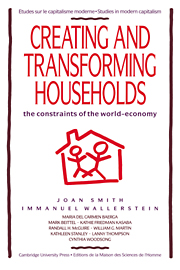Introduction
Published online by Cambridge University Press: 07 June 2010
Summary
In the late nineteenth and early twentieth centuries, the huge expanse of territory which is now known as the region of southern Africa was incorporated into the periphery of the world-economy. In the middle decades of the twentieth century, South Africa, one state in this region, became part of the semiperiphery of the worlde-conomy. Each of these transformations had far-reaching effects: the former established southern Africa as a major supplier of minerals – diamonds, gold, and copper; the latter established South Africa as the most highly industrialized country in all of Africa and as the dominant political power in the region.
The primary locus of these transformations was the Witwatersrand (or Rand), which until the mid-1880s was a sparsely populated and isolated strip of the interior. Initially developed as a mining complex, and subsequently as a center of manufacturing, finance, and commerce, the Rand attracted immigrants not only from throughout the region but also from the far corners of the globe. The expanding labor force relied simultaneously on periodic waves of White and Black permanent settlers, and on the establishment and maintenance of a coercive system of oscillating migration for Africans.
The racial divisioning of the labor force provided the foundation upon which South Africa's system of racial domination was built. Yet it would be specious to interpret the history of the region solely in terms of White versus Black, for there has been a considerable degree of differentiation and segmentation within each racial group.
- Type
- Chapter
- Information
- Creating and Transforming HouseholdsThe Constraints of the World-Economy, pp. 189 - 196Publisher: Cambridge University PressPrint publication year: 1992



